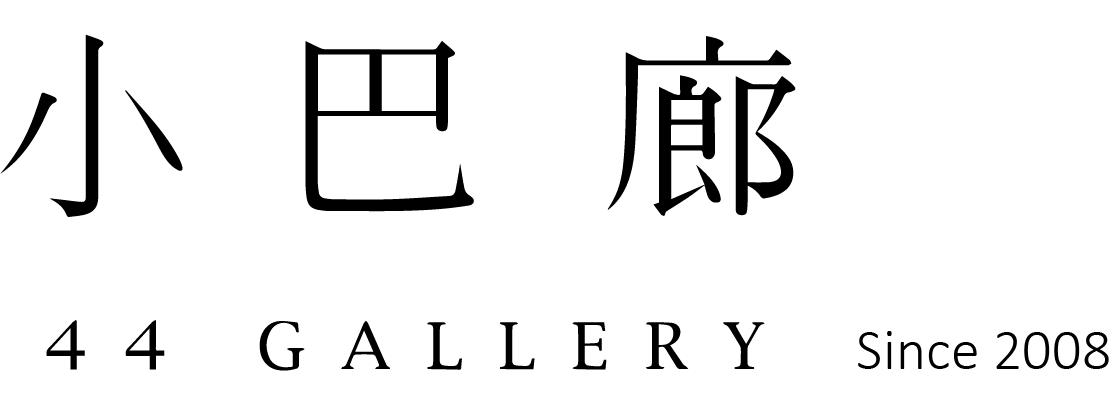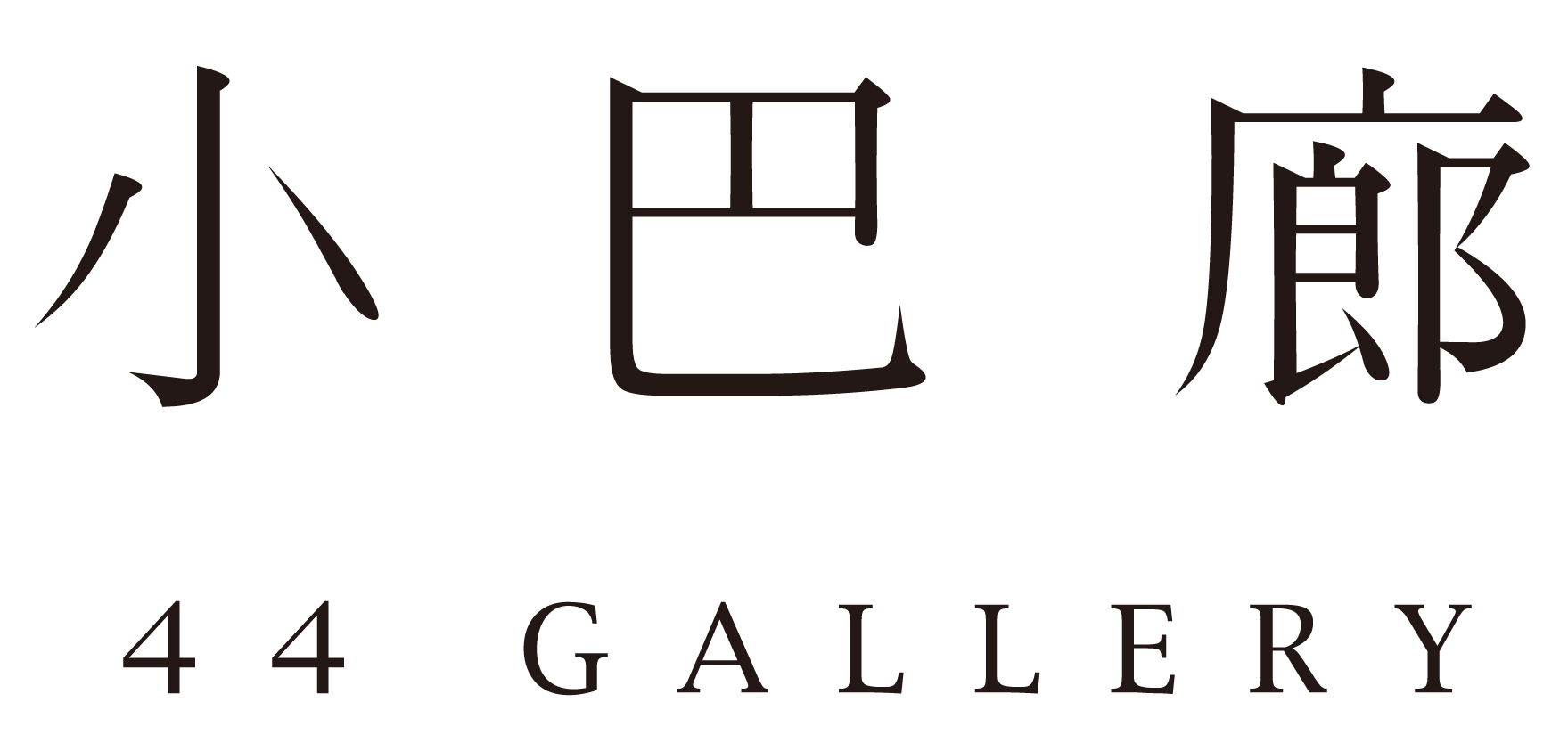『 聽樹的歌 』小巴廊 X 陳奎延 - 合作展
2022.09.03(六) – 10. 01(六)
凝神靜觀,這一首聽樹的歌 文|張禮豪
「我在森林中長大,它就像是一個房間,被妥善保護著。它也像是一座教堂…… 一個在天堂與人世之間的庇護所。」(I grew up in a forest. It’s like a room. It’s protected. Like a cathedral… it is a place between heaven and earth.)
──安塞姆·基弗(Anselm Kiefer)
在許多文化中,森林,都是一個極為獨特的場域。依託在萬物皆有靈的概念底下,這裡既是神明降臨之處,亦為靈魂寄寓之所,往往也是各種精怪出沒的地方……對大多數人而言,一旦踏足其中,彷彿就與所來之路斷開連結,進入一個全然陌生的環境,你無從指認林中的每一株植物,只有當陽光穿過繁密的樹葉縫隙灑落下來,隨風吹起之際彷彿幻化成無數的精靈調皮地跳躍舞動著;有時頭頂一片靜謐籠罩,唯有踩踏在落葉上頭發出的嘎吱作響,提醒你要留意腳下的步伐謹慎前行。
當夜色降臨,如果還盤桓林間不去,那將是全然不同的體驗,蟲鳴鳥叫、甚至久久一次難以明辨方位的獸吼傳入耳中,都會交織成令人惴惴不安的故事情境。或許,正是無法一眼望穿全貌,一直以來總是有那麼一些人,甘願選擇相對荒僻的小徑,沿著早已漫漶不清的殘存足跡,走入林中去尋找生平未見的景致。同樣的,也是這一片景致,成為陳奎延此次「聽樹的歌」個展中最為關鍵的創作核心。尤其,在全球遭逢疫情肆虐的這兩年期間,過去人們自由到世界各地旅行的常態被迫中斷,卻也促使許多人願意回過頭來花更多時間瞭解自身生活的這片土地,又或者,透過記憶的召喚與回返,再一次神遊曾到之處。
以雙眼描繪親歷的幻見
對他而言,一切都從策馬特(Zermatt)這個小鎮眺望著幾乎終年覆蓋白雪、如今已成為瑞士象徵的馬特洪峰(Matterhorn)開始。一方面,陳奎延堅持不懈地透過對自然景物的描寫來聲稱畫面的現實性;可另一方面,我們又可以見到某些企圖穿越表象視覺經驗的嘗試。略帶超現實的虛幻想像,甚至還有幾分宗教性的暗示意味,他以類似觀想的方式,透過「雙眼」此一帶有多重象徵意涵的符號或顯或隱地安插在不同的作品畫面裡頭,記憶與真實的差異再現於焉誕生,進而描繪出曾經親歷的幻見。
除去這件,我們也不難察覺到在餘下好些作品中,他都描繪了一個背對觀眾的年輕男性身影,有穿著繪有孤狼圖騰外套眺望遠方者,也有在猶似人頭輪廓所框圈起來的風景中遺世獨立地追日逐虹者,說穿了都是藝術家揉合記憶與想像後的自拍(Selfie),照見的更多是其「眼觀鼻、鼻觀心」、將自身意識投射其中的內視景象。同時,此一形象也經常性地出現在山泉池水,甚至縮小尺度側臥在枝椏間的鳥巢裡頭,俱可視為回歸大地女神蓋婭(Gaia)懷抱的想望。
樹的意象無疑是貫串這次展覽最顯而易見的修辭符碼,在眾樹成林的這片景緻中,偶爾可以見到斜伸的樹幹漸變為人形、以各種不同的姿態矗立向天的奇特構圖,彷彿童話故事裡頭才會出現的畫面,在在都體現了亙古不變的天人合一追求。蝶蛾等昆蟲的存在與其說是為了點綴畫面,倒不如說是對於不同物種各自背負之生命意義的求索與探問。此外,透過三五作品成組的展陳方式與閱讀節奏安排,像是在以耳語般的口吻喃喃獨白之際,也低聲細語向觀者吐露了神秘的變容和淨化。
至此,陳奎延繪畫創作的目的,已不再是讓觀者單純以目光去梭巡檢視,進而開展出一條間架完整的敘事路徑;相反地,正是端賴於此一揉合記憶與想像的虛構,讓藝術家得以洞悉生命的本質、體察到自我意識投射,好向數位時代下的訊息乃至於個體精神都愈趨碎化的現象提出一己最為真摯的回應。
重返無知才能清晰看見
隨著腳步逐漸向深處探去,你我耳畔不禁也傳來德國浪漫主義音樂家舒曼(Robert Schumann,1810-1856)的《森林情景》(Waldszenen)樂音。此一受到德國文學家勞伯(HeinrichLaube,1806-1884)的詩集《狩獵日記》(Jagdbrevier)啟發,只花了九天時間即創作完成的鋼琴獨奏曲集恰好共有九首曲子,既參照了不同詩人對於森林的描述,也體現了舒曼對美不勝收,卻又充滿未知的此一獨特場域之情感嚮往。
與老莊思想頗有相類,陳奎延深知人與自然之間不免存在矛盾,藉由創作或能找回些許平衡;同樣的,行走在虛構與真實之間日益模糊的界線上,唯有如同美國詩人華勒斯•史蒂文斯(Wallace Stevens,1879-1955)的詩句所說:「你須再度變成一個無知的人,用一無所知的眼睛再度看著海,在海的意念裡,清晰的看見海。」在這裡,無知意即去知,指的自是超越既定的知識體系和意識形態侷限,而陳奎延以其筆下的森林來替代海洋,觀者大可恣意化身為蛾成蝶,一無所悉地融入自然之中,讓內在精神得到充分的解放,實踐齊物逍遙的生命哲學。
In many cultures, the forest is an incredibly unique realm. Based on the concept that everything has a spirit, the forest is both a place for the gods to descend and a dwelling for souls. It is often also a place where various mystical beings reside. For most people, once they step into the forest, it feels as if they have disconnected from the path they came from, entering a completely unfamiliar environment. You cannot recognize every plant in the forest; it is only when the sunlight breaks through the dense tree leaves and falls down, and when the wind rises, that the sunlight seems to transform into countless playful spirits dancing around. At times, a calm canopy envelops the forest, and the only sound you hear is the crunching of leaves underfoot, reminding you to step carefully.
As night falls, if you remain in the forest, the experience will be entirely different. The sounds of insects, birds, and even distant, indistinct animal roars will intertwine into unsettling stories. Perhaps it is because the forest is always beyond full understanding that some people choose to wander down obscure paths, following the faint remnants of old tracks, searching for unseen sights. Similarly, this landscape has become the key creative core of Chen Kuiyan's solo exhibition, "Listening to the Song of Trees." Especially during the past two years of the global pandemic, which interrupted people's habitual freedom to travel around the world, it has prompted many to spend more time rediscovering the land of their own lives, or to return to past places through the summon of memories.
Depicting the Vision Through the Eyes
For Chen Kuiyan, it all started with a view of Zermatt, a small town, gazing at the nearly year-round snow-covered Matterhorn, which has now become a symbol of Switzerland. On one hand, Chen persists in claiming the realism of his works through the depiction of natural scenery. On the other hand, we also see attempts to transcend visual experience, with surreal visions and even subtle religious allusions. Through a contemplative approach, he embeds the symbol of "eyes" — rich in symbolic meaning — either explicitly or subtly in his works, creating a contrast between memory and reality, and thus depicting the visions he once experienced.
Apart from this, in several other works, we can see the figure of a young man with his back to the viewer. Some are dressed in cloaks decorated with totemic wolves, gazing into the distance, while others stand alone in landscapes framed by human-like outlines, chasing the sun or the rainbow. Ultimately, these works can be understood as selfies, blending memories and imagination, projecting the artist's inner consciousness. The same figure frequently appears in mountain spring pools, or shrunk down within bird nests nestled between branches, symbolizing the longing to return to the embrace of Mother Earth, Gaia.
The imagery of trees is undoubtedly the most prominent rhetorical symbol throughout this exhibition. Among the many trees in the forest, occasionally we see tree trunks extending into human-like forms, standing in various poses reaching for the sky, resembling scenes from fairy tales. These all reflect the ancient pursuit of unity between heaven and humanity. The presence of insects like butterflies and moths is less for decorative purposes and more a search for the meanings of life carried by different species. Additionally, the arrangement of works in groups of three or five, with the rhythm of their reading, seems to whisper in a soft, murmuring voice, revealing to the viewer the mysterious transformations and purification.
At this point, Chen Kuiyan’s artistic goal is no longer simply to let viewers scan and inspect the work with their eyes, thereby unfolding a coherent narrative. On the contrary, it is precisely through this blending of memory and imagination, this fictional creation, that the artist gains insight into the essence of life and becomes attuned to the projection of self-awareness, responding to the fragmented nature of messages and individual spirits in the digital age.
Returning to Ignorance to See Clearly
As your steps deepen into the forest, you may hear the music of Robert Schumann's Forest Scenes in your ears. Inspired by the poetry collection Hunting Diaries by German writer Heinrich Laube, this piano suite, composed in just nine days, consists of nine pieces. It references different poets' descriptions of forests and expresses Schumann's longing for this beautiful yet unknown realm.
Much like Laozi's philosophy, Chen Kuiyan is aware that there is an inevitable contradiction between humans and nature. Through creation, one might find some balance. Similarly, walking on the increasingly blurred line between fiction and reality, one can only, as American poet Wallace Stevens wrote, "become an ignorant person again, and look at the sea with eyes that know nothing, and see the sea clearly in the idea of the sea." Here, ignorance means going beyond the limitations of established knowledge and ideologies. Chen Kuiyan uses forests to replace the sea, allowing viewers to become like moths turning into butterflies, seamlessly merging with nature, releasing their inner spirit, and practicing the philosophy of life that seeks harmony with the universe.
4o mini
藝術家 陳奎延
︎
PROFILE / ARTWORKS




